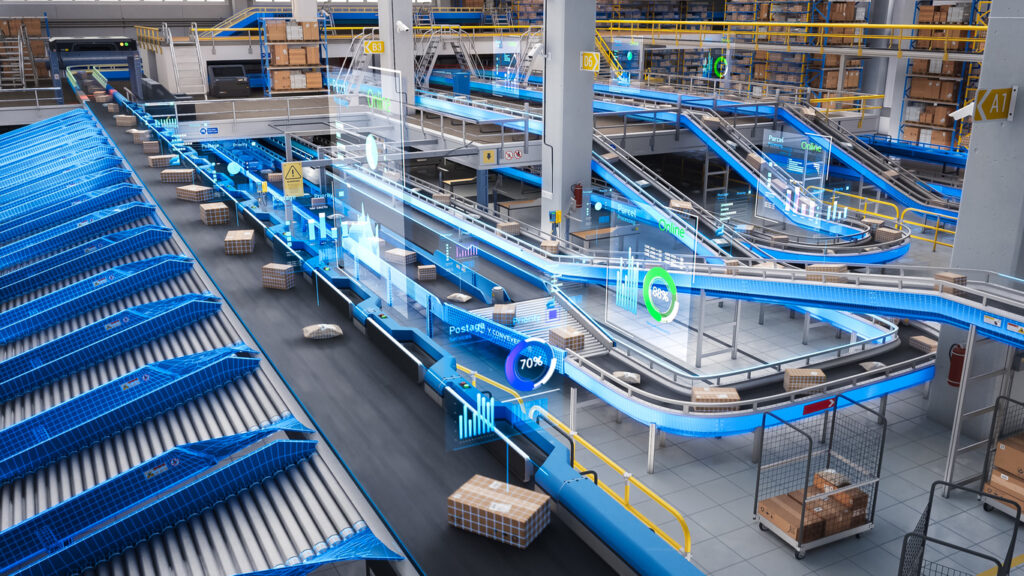Choosing the best automation equipment for your warehouse depends on unique operational needs, and thoughtful selection should align with integration, employee buy-in, and technical requirements—ensuring smooth, efficient, and impactful fulfillment processes tailored to your business.
If you’ve read our previous installments in this series, then you can probably already anticipate the short answer to the question “What is my best option for automation equipment?”:
“It depends.”
While eCommerce and pharmacy fulfillment companies may share similarities in the challenges they face, once a business has reviewed its current operations, crunched the numbers, and analyzed its order flow, it will be obvious that to be effective, the selection of automation equipment is not a one-size-fits-all solution.
By the time a company has put together the information from Parts 1 through 3, they should have a clearer idea of what kinds of equipment will yield the biggest positive impact on optimizing order fulfillment. Next we’ll talk about buy-in and additional considerations to take into account when making decisions on which kinds of equipment to purchase.
Getting Buy-In on Equipment
Ideally, the workers who form the backbone of a company’s existing fulfillment processes have been a valuable source of information on what has been working and what can use improvement during the research stages of this journey. It’s essential to note that while automation drastically reduces the amount of manual labor needed for order fulfillment—particularly repetitive tasks that can result in injuries and errors—there are no human-free systems. Skilled, knowledgeable employees will always be needed to keep orders flowing and to deal with any anomalies that require intervention.
The key is that thoughtfully chosen automation allows your workforce to be more productive in a safer, less stressful environment. The recommendations arrived at from the first three steps will naturally be different for each company. However, the right solution for your company should have immediate benefits that are obvious to your employees, whether that is an automated packer that eliminates hand packing or a tabletop bagging machine that opens the bag, labels it, and seals it after contents have been loaded. If you’re using cartons, equipment that automates weighing, void fill, and packing slip insertion speeds throughput while reducing errors. When rate shopping is a goal (or an existing bottleneck) a SLAM (scan-label-apply-manifest) system can take the headache out of minimizing shipping costs. Finally, automated sortation makes it possible to sort packages of different weights, shapes, and sizes quickly and accurately in a smaller space footprint to go to multiple carriers at multiple service levels. When employees understand the rationale and receive the training and support to ensure that the new systems work as intended (more on that coming in Part 5!), then your company will be able to get the most out of their investment in automation.
Integrations
Another essential question a company introducing automation technology should be asking at this point is what they are doing for integrations. First, the hardware and machinery chosen will need to operate smoothly with the software in use. This includes your warehouse management system (WMS), which controls operations from when goods enter your warehouse until they move out, and transportation management systems (TMS), shipping software that helps optimize shipping costs and efficiency.
In addition, before anything is moved in the door, equipment integration must be planned for. How will new technology flow in the warehouse with current processes? And where will new equipment be placed? The application engineer on the project should provide drawings showing the proposed layout making it clear exactly how the process incorporating the new automation will be situated and function.
Tech Requirements
The last step before your company is ready to move ahead is to ensure that all the technical requirements for your selected equipment can be met. Depending on the machinery chosen, power requirements can vary, and pneumatic features may have air needs that also need to be considered. For example, a tabletop bagger may only need a standard outlet, while larger equipment may need higher voltage and amperage. The layout should be reviewed to ensure that such requirements can be met in the proper locations, and if upgrades are needed, they are planned and budgeted for.
In addition, data needs should be taken into account for printing addresses on polybags. What printer language will the system be using—e.g., Zebra, Datamax, or SATO—and will you be set up to ensure that your equipment can communicate seamlessly?
Your Partner in Strategic Automation
Even when you know the right questions to ask and are sure automation is the logical next move for your fulfillment operations, making the leap can feel like daunting. The team at Tension Packaging & Automation is here to give you the expert support you need to chart the best path forward for your company and move ahead with confidence. To learn more, contact us here today.
